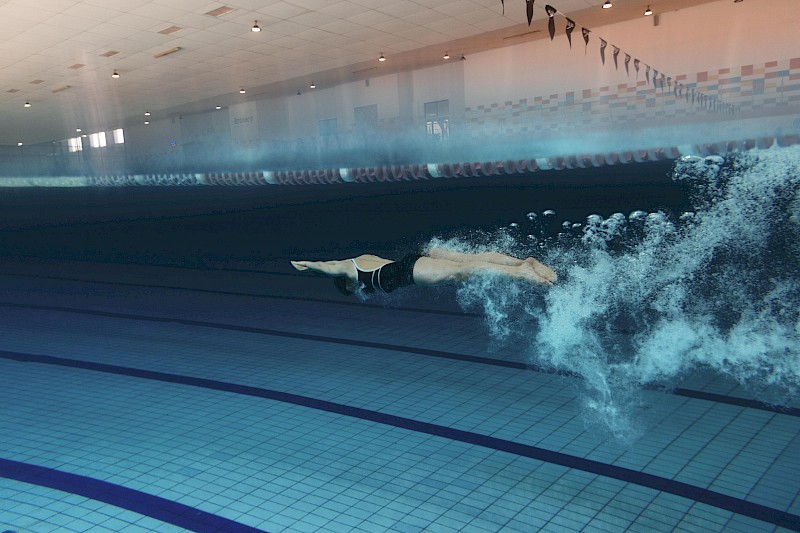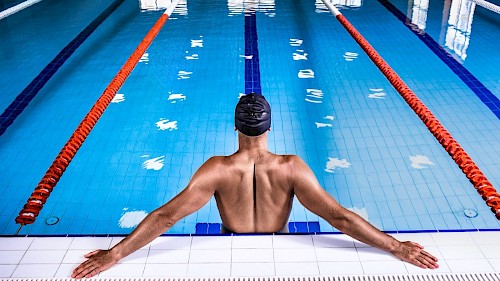
The first part of aquatic exercise is devoted to warming up, which is often thought of as simply moving around the pool. But what if instead we learned how to make the most of this time?
Often the warm-up is proposed and interpreted as a simple back and forth from one side of the pool to the other, a container that remains empty. So it happens that we float for several metres without paying attention to technical details, without changing intensity or style, without a thinking head in command. In this way, the metres go by and the time passes without any useful investment, and when you face the central series of training, you realise that you are out of breath and that your body reacts with delay.
Physical (and mental) activation
Warming up is preparation at the muscle level, bringing the fibres up to temperature (i.e. warming them up) so that they are not damaged when higher intensity is required. The heart rate increases and the breathing rate increases. The "engines" are then warmed up to increase both the effectiveness of the technical gesture and performance.
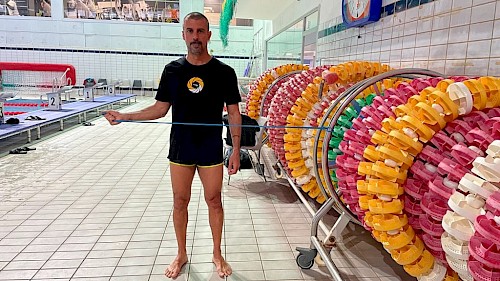
In addition to the physical aspect, the mental aspect is, or at least should be, of great importance. After all, warming up the engines without a ready driver will not get you very far...
Warming up should be seen as an activation of attention, a reminder of what you are doing: if the mind is active, the investment of time is assured and the result will be decidedly more rewarding.
The 'dry' part
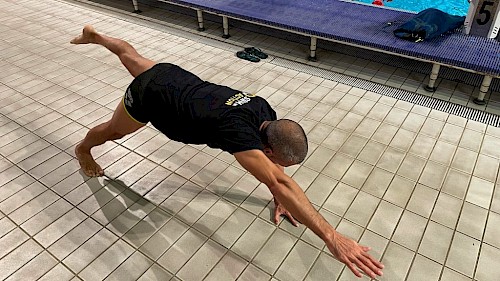
A good habit could be to set up a short dry warm-up routine (i.e. out of the pool) with targeted movements for proper psycho-physical activation.
One can focus on the shoulder joint, which is the one most stressed in swimming, being a joint that is more mobile than stable and therefore needs special attention. Specifically:
- You can do strengthening and preventive exercises for the rotator cuff (a set of 4 muscles that stabilise the shoulder joint) using an elastic band, a light dumbbell or isometrics.
- You can do exercises to improve shoulder mobility
- You can do mini-series of planks (static and/or dynamic) to activate and strengthen the core.
- You can do a few seconds of jumping jacks (or burpees for the more experienced) to increase your heart rate.
- You can improve hip mobility and develop better overall balance stability.
All this should be part of the logic of a short warm-up (20'-30'), i.e. an activation that has a purpose, not simple oscillating movements or circles, which risk being the main cause of damage and injury because of the way they are performed.
Heating in water
Once you have completed the dry routine, you can get into the water. Bearing in mind that training should never be improvised on the spot, we can think of dividing the warm-up block into several steps, focusing on the weak points. We can introduce variations in rhythm, the use of different styles and the use of equipment that changes habits.
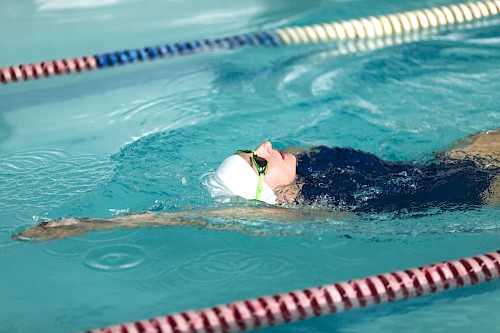
It can be helpful to make a short list of things to focus on. For example, whether you want to focus on head position, a phase of the stroke, leg movement, breathing, turning details, etc. Everyone has their own little weaknesses that need to be developed (preferably with the help of a coach): you can focus on one or two points from this list and complete them during the warm-up.
For example, for a 500m race, instead of swimming all the freestyle strokes at the same speed, we could do the following
500m with fins, 75m style and 25 backstroke (perhaps the 75 at an easy pace and the 25 sustained backstroke);
500m snorkel style, of which 200m focusing on breathing rate and 300m doing only 25m legs and 25 strokes;
500 m without apparatus, divided into 200 m with emphasis on the speed of the turns (not necessarily only freestyle) and 300 m freestyle with 50 m easy and breathing on the same side of the pool and 25 m in hypoxia at moderate frequency.
Cardiac activation
Before the actual swimming work, it is also very useful to do some activation work, which can be generic or specific, and then linked to the main series.
A generic pre-set can focus on developing short strokes (e.g. 8×25 with a maximum of 10-15m, then finish loosely at 25. Wide break), on developing breathing capacity (12×50 with a change of breathing frequency every 50: 3/5/3/7 or similar), on internal progressions (8×25 in internal progression at every 25) or external progressions (12×50 in external progression from 1st to 3rd), on technique exercises, on the basics (start, turn, finish, dive), etc. The use of equipment depends on the purpose of the exercise and on imagination. In short, the warm-up is the cradle of unconsciously acquired errors, discontinuous movements and small details that, if neglected, will create counterproductive motor habits that are difficult to change.
Investing time and attention in this moment of training is therefore a winning choice.
